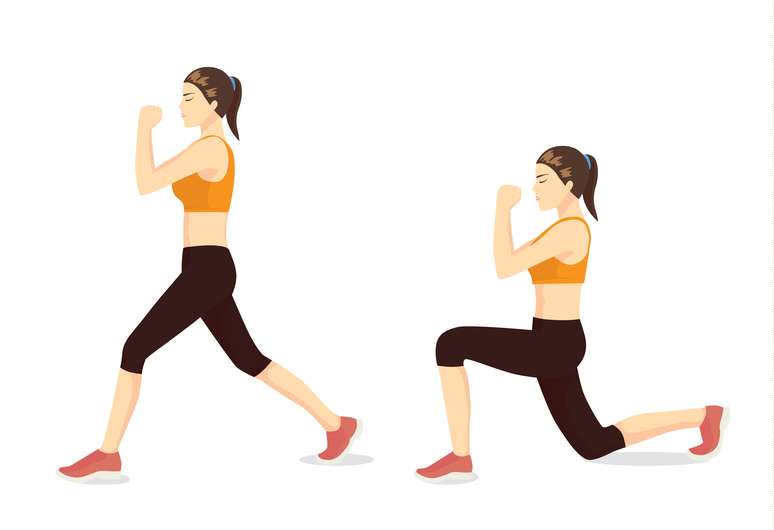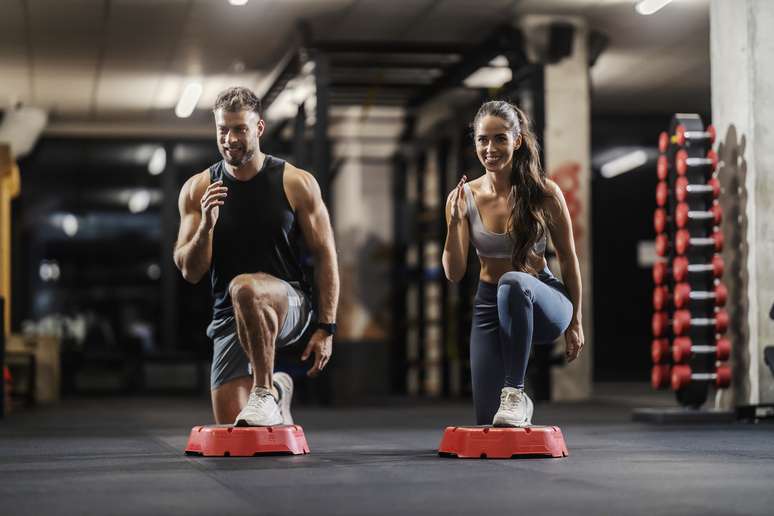The technique can be used to intensify exercises and increase muscle strength and hypertrophy
Do you know what isometric training offers? This is another training technique used to optimize strength gains and muscle hypertrophy, suitable as a complement to traditional gym training.
In short, isometric training is a form of exercise in which the muscle is put under tension without changing its length. In other words, it is a muscle contraction performed statically, without movement of the joints.
This type of training is effective for increasing muscle strength, improving endurance and stabilizing joints. Additionally, it can be beneficial for injury rehabilitation as it places less stress on the joints.
Isometry can be used for any type of bodybuilding or calisthenics training, including to train the legs and obtain satisfactory results in increasing the volume of the thighs, did you know that?!
Benefits of isometric training
- Greater strength: By maintaining a stable position for a period of time, your muscles become stronger
- Joint stabilization: This method helps improve joint stability, which can prevent injuries
- Rehabilitation: It is excellent for people recovering from an injury as it allows them to work their muscles without excessive joint movement
- Time efficiency: it can be done anywhere, even at home, and doesn’t take much time
Now that you know what isometric training is and its benefits, let’s understand how to apply it to leg training to improve your results!
How does isometry work?
Isometric training does not constitute the entire part of the training, but is usually used as a complement to increase the difficulty and, consequently, the results. For example, in leg training, isometry can be applied at specific times.
For example, let’s say your leg workout consists of exercises like squats, lunges, leg extensions, and leg curls. Isometry can be used as an asset when performing one or more of these exercises, activating more muscle fibers and improving results.
When using this isometric method, a specific muscle or muscle group is contracted longer, maintaining tension for several seconds or minutes, thus wearing out the target muscles. While it seems relatively simple (because it is), it is taxing on the muscles used.
Perhaps the best-known example of applying isometry is the abdominal plank, in which you exercise your abdominal and core muscles simply using the static plank position. However, you can also apply isometry to leg training! We will see:
Leg isometry
Let’s give some examples on how to use isometry in leg training to achieve more satisfactory results in terms of muscle hypertrophy, endurance and strength! It’s really very simple to apply.
1. Traditional squat with isometric exercises
To use isometric exercises in the squat exercise, prefer to perform them with a lighter load than you are used to (or even use no load at all). So, start squatting normally for a few repetitions and then apply the isometric exercises: simply hold the squat position (at about 90°) for a few seconds, or as long as you can stand, then continue with the movement as normal. You will feel your muscles “burn”.

2. Isometry on the extendable chair
The leg extension is a great exercise for the front of the thighs and can also improve its results with the use of isometric exercises. The logic is the same as the squat: perform a few leg extension movements on the machine and then hold the position with your legs straight for a few seconds, until you feel it is difficult to maintain. Then, perform the movement normally, with full range.

3. Isometric lunges
The lunge is a type of unilateral squat, performed by bending one leg in front of the body. In this case, you will apply isometric exercises to each leg separately. Start on one side and perform a few movements, then hold the isometric position with the front leg bent for a few seconds. Then, finish the full movement and repeat with the other leg.

Conclusion
It may seem that isometrics is a simple technique, but believe me, if applied correctly it will help you improve the results of your leg training. It can be used in practically any exercise to increase the difficulty and activation of the muscle fibres, but to do this remember to consult a physical education professional, who will be able to advise you on the best way to apply the technique and also on the appropriate times to perform it . usage.
Source: Terra
Ben Stock is a lifestyle journalist and author at Gossipify. He writes about topics such as health, wellness, travel, food and home decor. He provides practical advice and inspiration to improve well-being, keeps readers up to date with latest lifestyle news and trends, known for his engaging writing style, in-depth analysis and unique perspectives.








